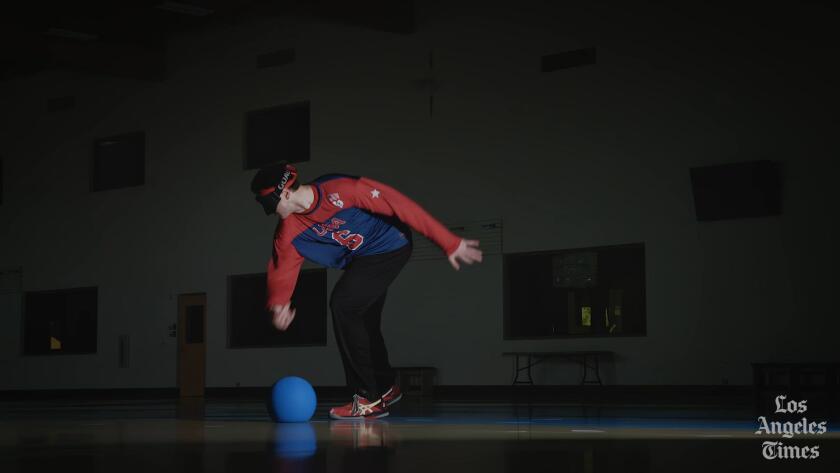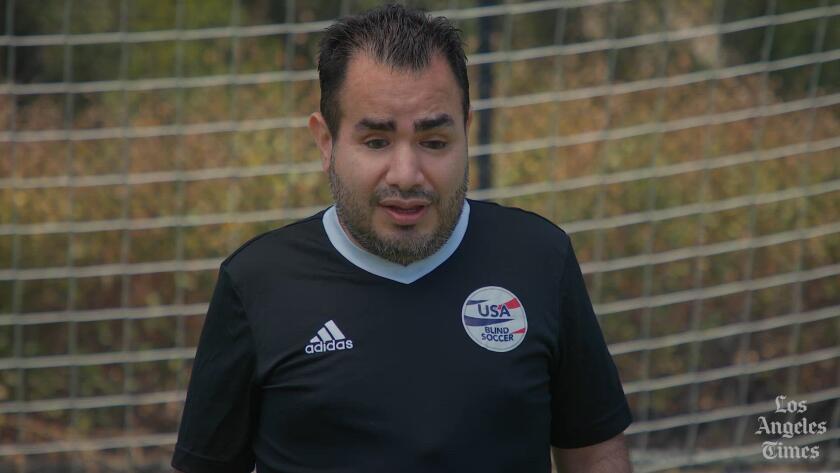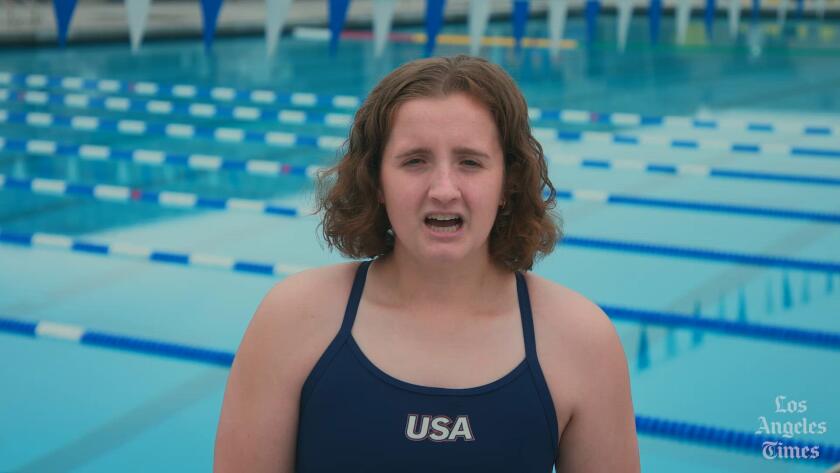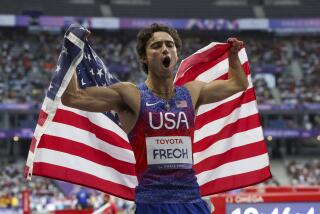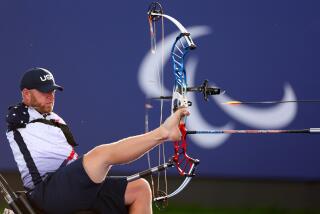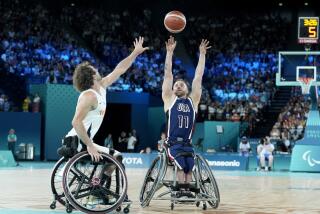- Share via
- Share via
CHULA VISTA, Calif. — Forty-five strokes.
McClain Hermes knows precisely what it takes to swim, as fast as possible, to the far end of a 50-meter pool. Keeping count is vital because she is blind.
“I have broken several bones running into the wall,” she says. “I’ve broken my fingers multiple times and broken my nose multiple times. I’ve gotten several concussions.”
Some of the athletes at the 2024 Paralympic Games in Paris will wear prosthetics, others will be in wheelchairs. Those who are visually impaired will face a different sort of challenge.
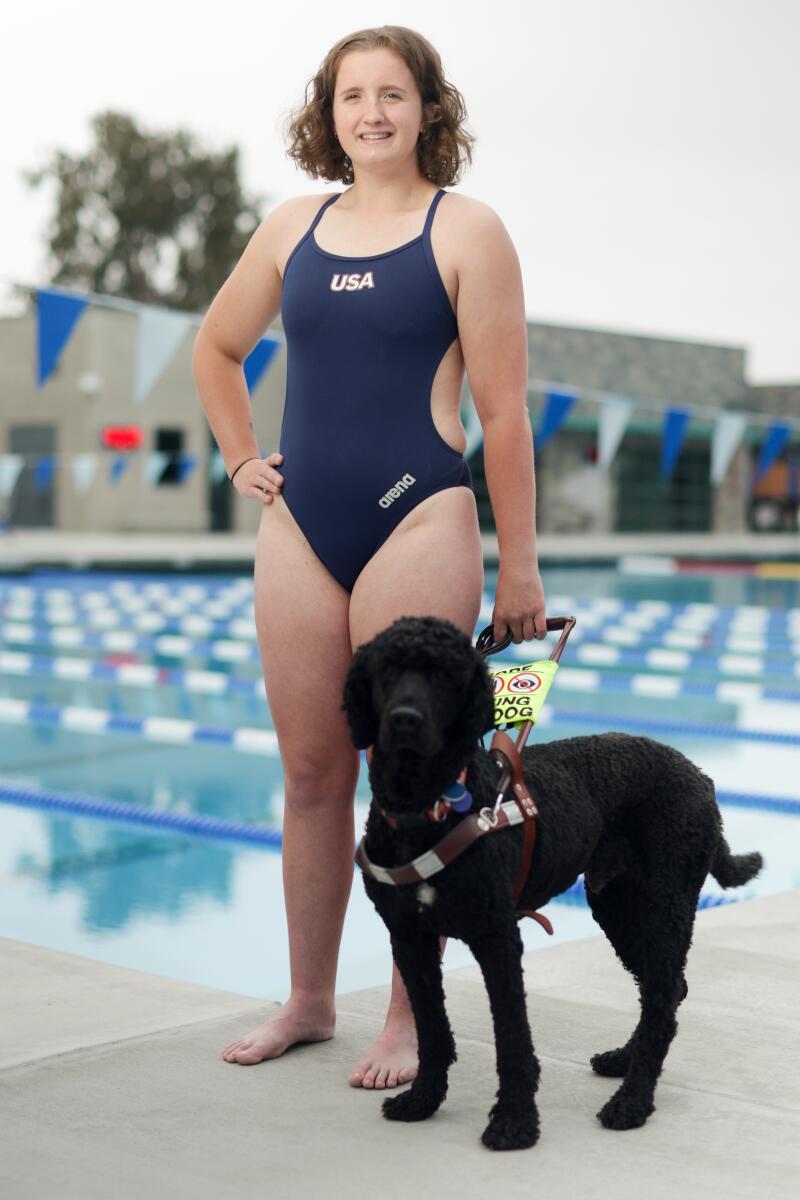
Swimmer McClain Hermes and guide dog Uzo
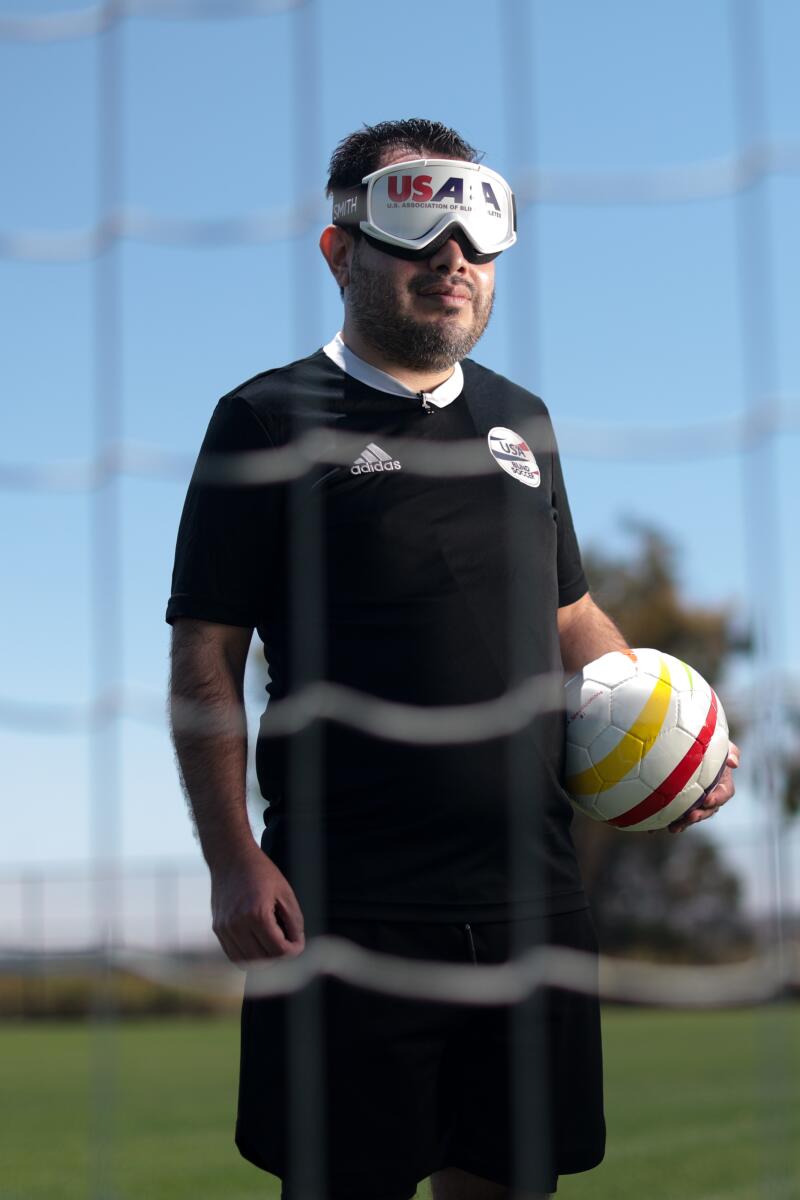
Soccer player Alvaro Mora Arellano
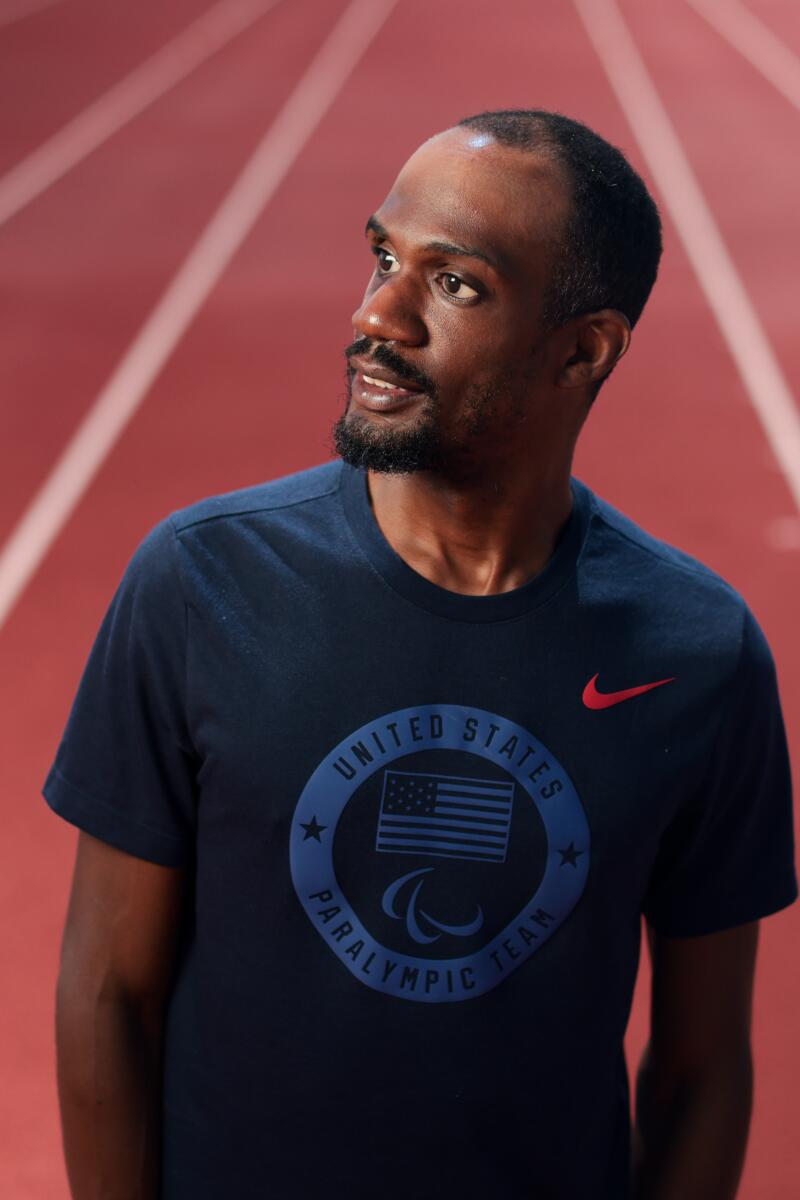
Long jumper Lex Gillette
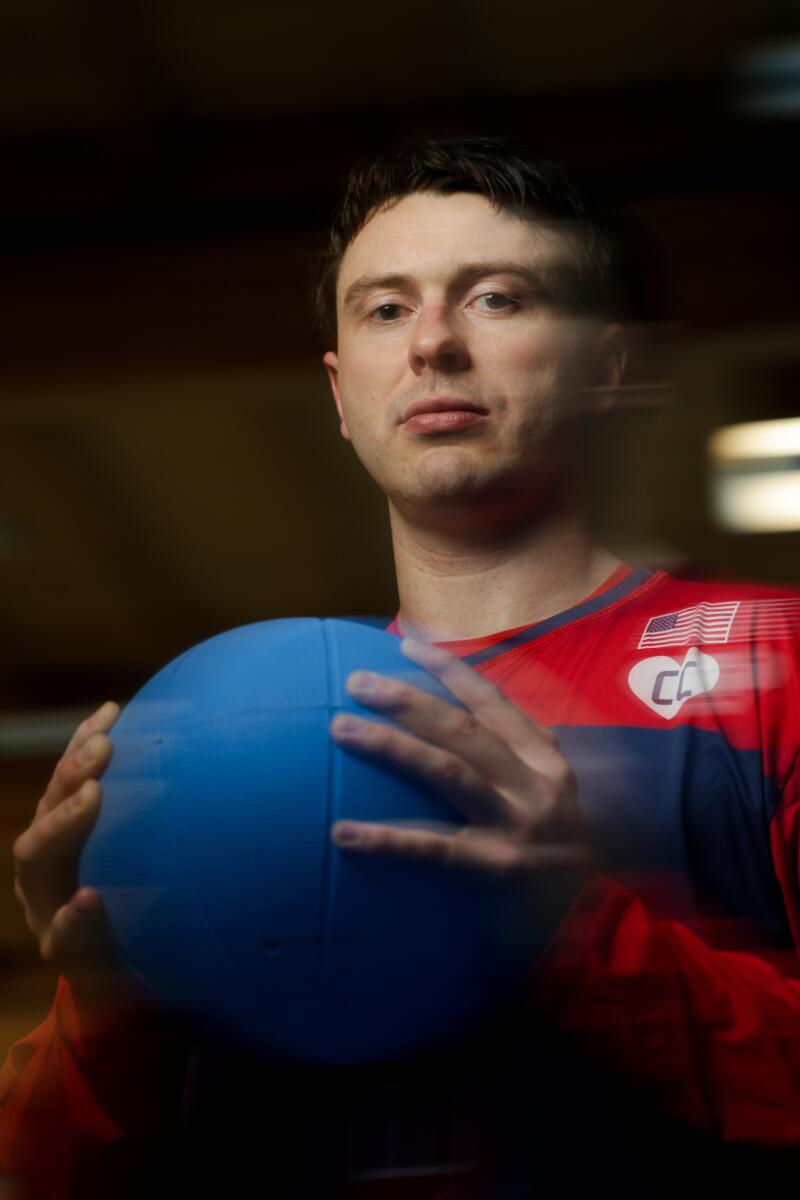
Goalball player Calahan Young
Swimmers will charge toward an unseen wall. Long jumpers will sprint down a narrow runway, aiming for the sound of a voice or clapping. Soccer players will continually yell “Voy” — I’m coming — so they don’t smack into each other.
“There is a lot of information that’s lost from having no vision,” says Liana Mutia, who latches onto opponents and relies on her hands to compete in judo. “It’s all based on touch, it’s all based on feel.”
This spring, The Times visited with Paralympic hopefuls in training. Some ended up making the U.S. team, some did not. All of them showed what is required to play a sport they cannot see.

- Share via
Click to unmute
The fear never goes away. Not completely.
With each long jump attempt, Lex Gillette launches himself down the runway, sprinting more than 100 feet toward the sound of his guide clapping and chanting, “Fly, fly, fly.”
If he drifts off course, guide Wes Williams yells “Stop” — if there’s time. At the 2015 world championships, Gillette faded left then overcorrected at the end of his run, too late to abort, and landed hard outside the sandpit.
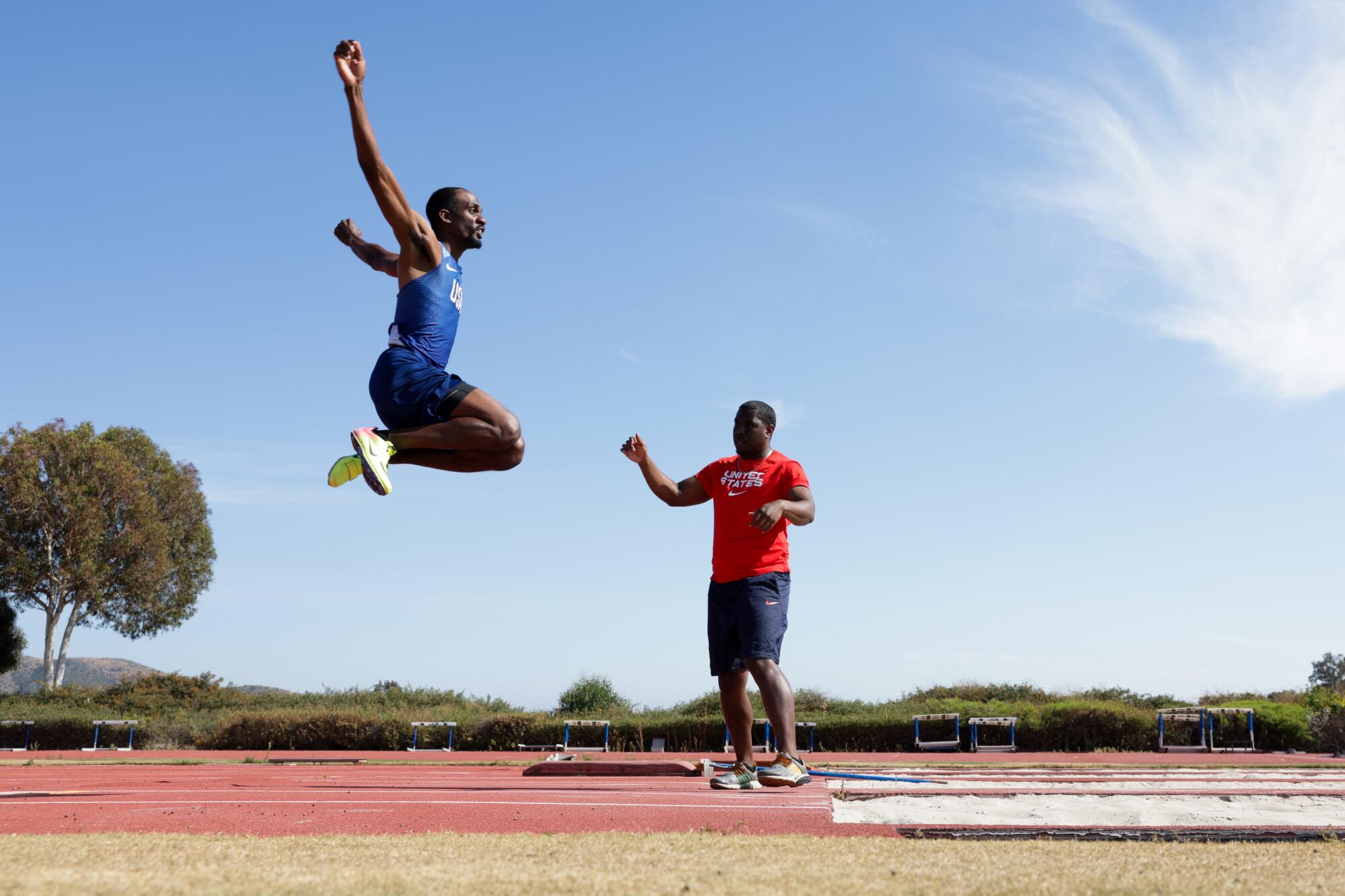
The five-time Paralympian, who did not qualify for Paris, can’t let occasional miscues — no matter how painful — slow him down. He trusts that Williams, standing dead-center in front of the pit, will not only steer him straight but also hop out of the way at the last moment.
“Running towards a sound you cannot see, it’s challenging, it’s difficult,” Gillette says. “But it’s really awesome.”

- Share via
Click to unmute
Goalball couldn’t be more simple.
Opposing teams stand at either end of a volleyball-sized court, guarding 30-foot-wide goals. They take turns whipping a heavy rubber ball — it has bells inside — back and forth, trying to score on each other.
The hard part is getting all three players back in position after the shooter scrambles to make a throw or everyone dives to block a shot. That’s where touch comes in.
Much like in volleyball or basketball, the court is marked with painted lines, except in goalball, the lines are slightly raised, just enough to feel with your foot or hand.
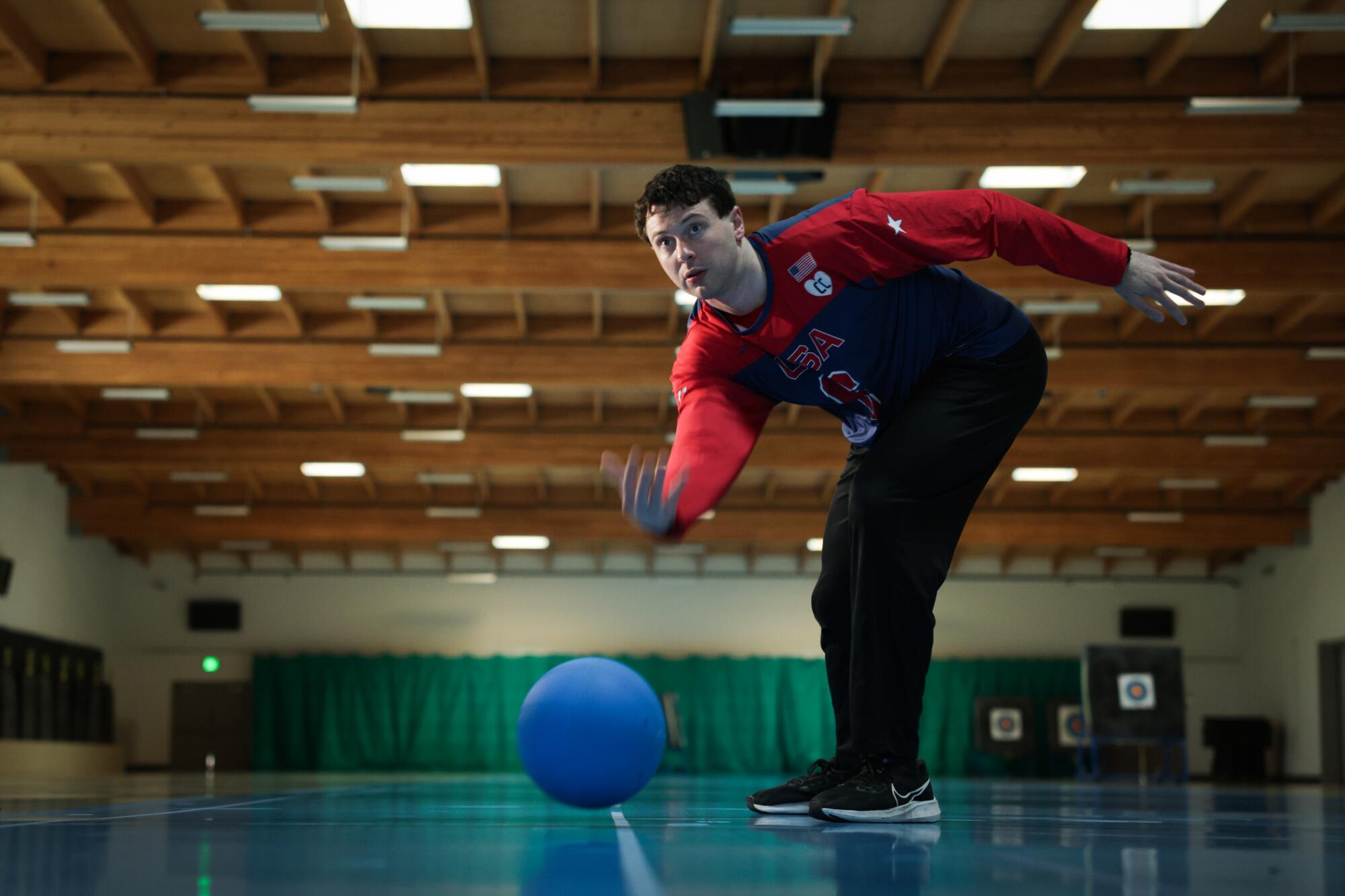
“It’s an actual piece of physical feedback you can get to help orientate yourself,” says Calahan Young, who is headed to his second Paralympics with the U.S. team.
As in other para sports for the visually impaired, players wear blackout goggles to ensure that everyone is completely blind. “If you didn’t have those lines,” Young says, “you’d be at risk of running into your teammates and it just gets dangerous.”

- Share via
Click to unmute
Players yell “Voy” at each other. Coaches and guides are constantly shouting. With its small field, surrounded by walls, blind soccer can get noisy.
So picking out the voice you need to hear is essential.
As a member of the U.S. team, Alvaro Mora Arellano stations himself along the sideline, waiting for the jingling ball to come his way. He forms a wide V with his feet to receive the pass, then shifts his focus to instructions from a coach at midfield.
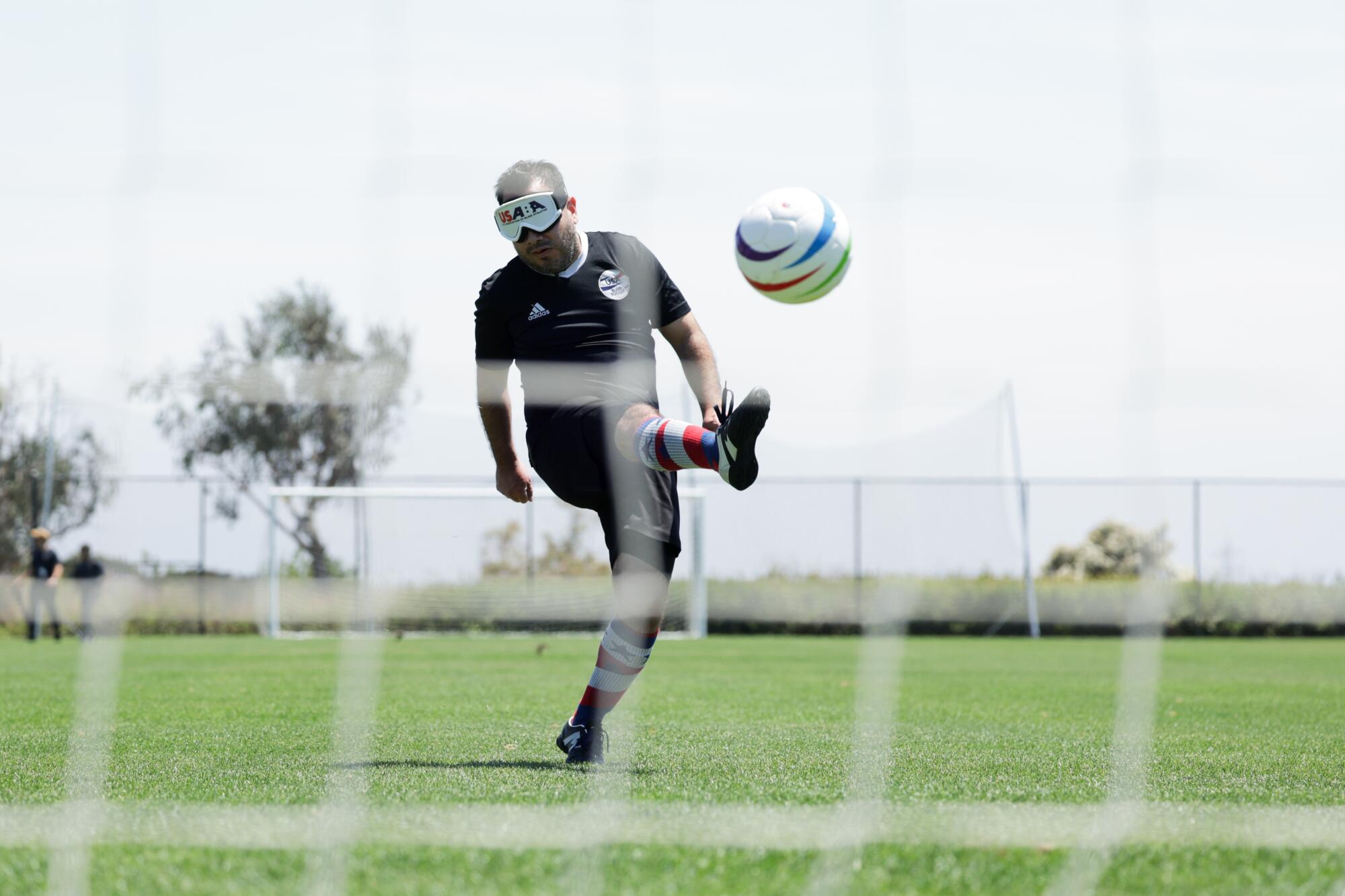
“An example can be, like, what pace do they want you to go?” says Mora Arellano, whose team is not in Paris but will compete at the 2028 Paralympics in Los Angeles. “If they want you to go at an angle, they can tell you ‘45.’”
Dribbling toward an open space, he now listens for a guide stationed behind the goal, who will tell him when to shoot on the goalkeeper — the only person on the five-player team allowed to be fully or partially sighted. Instinct is also a factor, as evidenced by Mora Arellano’s game-winner against Canada last year.
“I heard the guide behind the net telling me to shoot, but I just took some extra steps because I thought I could place myself in a better position,” Mora Arellano recalls. “He said shoot for a second or third time — I don’t even remember — and I felt confident about taking the shot.”

- Share via
Click to unmute
Counting strokes isn’t quite enough. Every once in a while, Hermes brushes her hand against the lane line to keep swimming straight. And, as the wall draws near, she needs one more cue.
Swimmers in the vision impaired classification often have “tappers” standing at each end of the pool. These helpers use long, thin poles to tap the athlete’s back when it is time to make a flip-turn or stretch for the finish.
“When I was younger, I used to get tapped two strokes away from the wall,” says Hermes, who qualified for Paris as an alternate. “Now I get tapped and I flip right away, so that there’s no hesitation and I’m keeping the power throughout the whole 50 meters.”
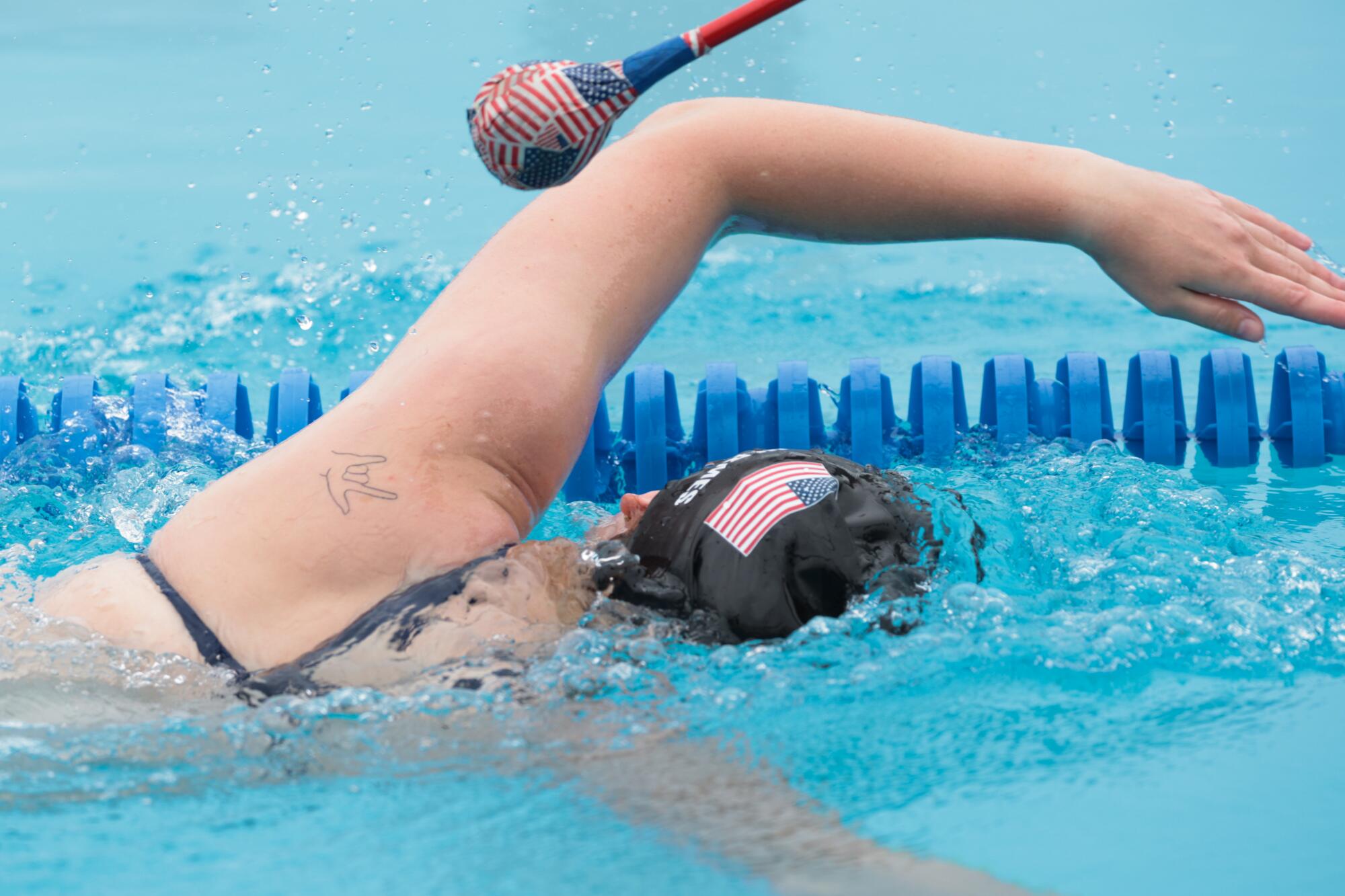
The timing must be precise. Not everyone is cut out for the tapper’s job.
“When you break my nose or my finger,” she says, “you kind of get fired.”
All elite athletes rely on practice, years of doing the same thing over and over, to keep them relaxed and confident in crunch time. Trust your technique, they say. The concept is especially crucial to Paralympians who cannot see.
They need smarts and heightened senses. Maybe a little help. Definitely courage.
More to Read
Go beyond the scoreboard
Get the latest on L.A.'s teams in the daily Sports Report newsletter.
You may occasionally receive promotional content from the Los Angeles Times.



